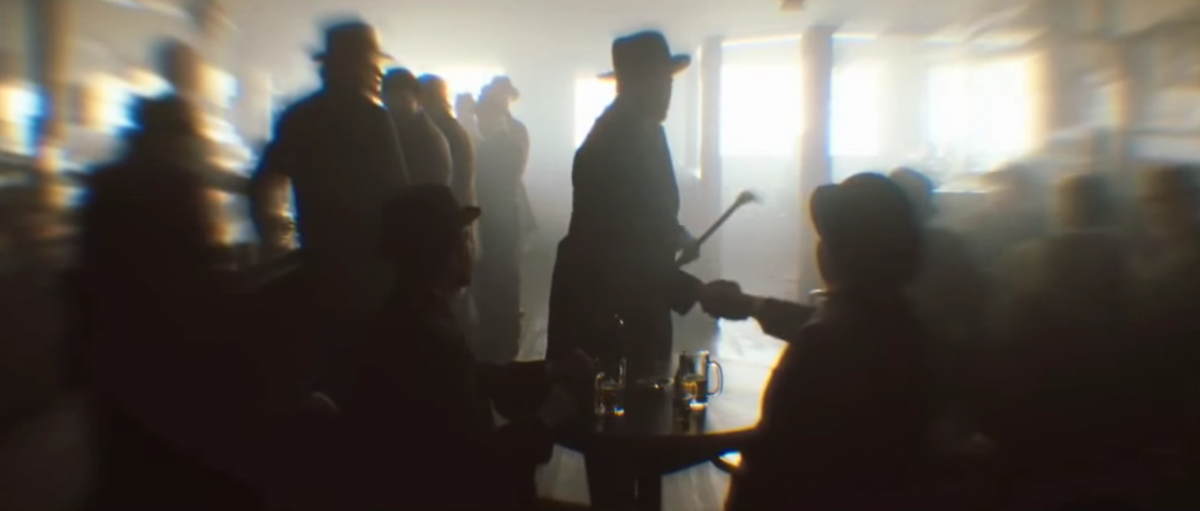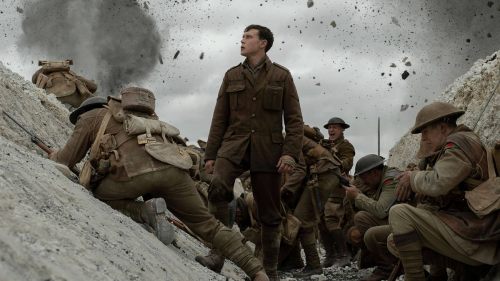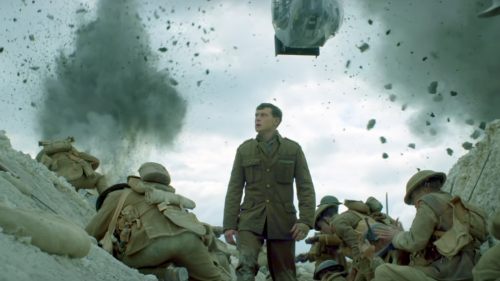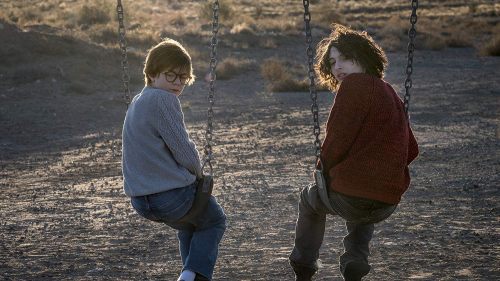THE ASSASSINATION OF JESSE JAMES: A Western Memory
A couple of years ago, I was lucky enough to attend the final leg of the Jesse James Revival at the historic Egyptian Theatre in Hollywood, an event I absolutely could not miss. The Assassination of Jesse James by the Coward Robert Ford was perhaps the first film I ever fell in love with, so deeply that every aspect felt like a revelation. I’d long feared it was my own inexperience at the time, a boy of fifteen discovering what may have been a lesser Western or even a lesser film in the eyes of others, but the 2013-2014 revival confirmed two things for me. One, that I wasn’t alone in being pulled in to this ethereal experience, so utterly and completely that it grew in meaning year after year. And two, that adulthood had not only reconfirmed my affinity for it, but had enhanced it, as distance from my own childhood had given way to alignment with Ford’s own perspective. No great film can be analyzed without digging deep into every layer of its construction, and I trust you wouldn’t be reading this if you didn’t find such an approach to cinema interesting at the very least, but The Assassination of Jesse James is sort of an anomaly, that is to say my approach to it has no choice but to be anomalistic.
Cinema is a visual medium, and the best cinematic works tend to construct visuals in service of their stories. I don’t know what the approach to this film was, and I won’t presume to, but what’s unique about it is that when deconstructing it, the visual elements reveal themselves to be primary in a way that few other films can claim. While its score is equal parts haunting and melancholy, evocative of both time period and painful nostalgia, and its narrative is ripe with performances that encapsulate the dichotomy of isolation and social desire, the world these characters inhabit is as much a protagonist as the titular James and Ford. The film is often mistaken for the kind of art piece that experiments with visuals and leaves its narrative secondary, an easy mistake to make owing to how overtly encapsulating the visuals are while the narrative remains both unconventional and understated. It’s hidden in plain sight, as if it were using the frame as a hiding place, but the picture is more than just camouflage. It acts both as page and printing press, with the characters and their stories coming to life in the form of hidden messages in the ink. Before even beginning to understand ‘why’ The Assassination of Jesse James is what it is, we need to understand what it is in the first place. From a narrative standpoint, it’s a murder ballad. But from a visual standpoint, it’s folklore in the form of Regionalism, a style of American painting that originated during the Great Depression, harkening back to the rural, and to the simple. More specifically, it’s Regionalism second-hand, passed down like legend.
While the film is as singular a work as any, espousing director Andrew Dominik’s penchant for poeticism within apparent simplicity (from dialogue, to staging, and beyond), the film wouldn’t be what it is without its other key collaborators, especially the likes of composers Nick Cave & Warren Ellis, and cinematographer Roger Deakins. If we’re going to have a conversation about the film’s visuals, we absolutely have to get into Deakins’ contributions, but that’s not something we can do until we’ve made mention of the influence of Andrew Wyeth, son of renowned artist Newell Convers Wyeth and brother to several other artists. Early 20th century Regionalists were pioneers in their own right, precursors to both American modernists and Abstract expressionists, who took pride in the rejection of the urbane, and who bridged the gap between mid 19th century Abstract art and Academic realism. In that sense, they were akin to impressionists and post-impressionists who had bridged a similar gap in France during the century prior. America’s own van Gogh and Cézanne, if you will.
Two striking examples of Wyeth’s influence on the film are his works from the 1940s, Christina’s World and Turkey Pond, which bear a striking resemblance to some of Deakins’ compositions:


The woman in the first painting, Ana Christina Olson, was Wyeth’s neighbor in Maine, and like Brad Pitt’s Jesse James (whose granulated eyelids meant he’d eventually lose his vision) she too suffered from a degenerative disease that was slowly chipping away at her. In her case it was polio, and Wyeth was inspired to create the painting after seeing her crawling across a field. What’s interesting about the painting however is the perspective it employs, as Wyeth originally saw her attempts to return home when he was inside her house. There’s a similar scene in the film where Ford is watching James from James’ own window, and given the context of Ford’s relationship with James as well as his aspirations, the scene employs a similar shift in perspective, as the younger outlaw spends much of the film attempting not only to see the world through James’ eyes, but to take his place. What’s even more noteworthy is that the film’s crisis of identity isn’t dissimilar from that of the painting itself.
The looming questions over Ford and James throughout the film are that of identity and its authenticity. The Jesse James of word of mouth and the novels of Ford’s youth is different from the Jesse James of the real world, a man still trying to leave his mark on it despite what others have claimed, and Ford is playing a dangerous game by getting close to him. Whether or not he knows it, he’s trying to supplant the outlaw, an act that grows more and more sinister as he discovers just how much of his childhood was a lie, until he eventually becomes a notorious outlaw himself, destined to re-enact his moment in the spotlight over, and over, and over again. Supplanting of identity within historical narrative is key to Wyeth’s Christina. The memory is told through the eyes of the titular woman despite Wyeth having been at diametrically opposed vantage point, and the creation of the woman herself is a lie, for it was Wyeth’s own wife who sat and posed as the paralyzed Ana Christina. Just as Ford would examine his hand with his middle finger bent over, as if he were missing it like his idol, Wyeth’s recreation of this woman’s identity involved supplanting her through pretense, bringing into question the inherent authenticity of his Regionalist style. Which isn’t to say inauthenticity in a single aspect renders the whole inauthentic (some would invoke the argument of artistic license, and honestly, so would I), but for a style as rustic, as simplistic, and as ready to return to its author’s countryside roots, it poses an interesting question regarding the dichotomy inherent to ‘authentic’ art when it comes from a place of revisionism. Wyeth and his contemporaries worked in response to World War I just as the events of the film itself take place in the post Civil War era, where the re-establishment of identity was key. The James Boys began their criminal activities the year after the Civil War, and the novel on which the film is based was written & researched in the aftermath of Vietnam.
Can a reflection or re-creation of authenticity truly be authentic in its own right? Killing James (and thus, a part of himself) sticks Ford in a purgatorial loop where he’s destined to become a more stylized version of himself with every iteration. However, his brother’s slow descent into resentment at having to repeatedly portray James turns him into a remnant of James’ own spirit, so perhaps authenticity is a thing that can only be replicated by accident, if at all. Then again, perhaps detail-oriented authenticity needn’t be an end-goal in a world where our identities, like Ford’s, are constructed around fiction. Many of Deakins’ shots, especially those scored by voiceover, depict events and moods in between the major scenes, and are tilt-shifted in such a way that they resemble old photographs. The colouring is ever so slightly skewed around the edges, as if still pictures from the 19th century were given new life. More homage than impersonation. They’re evocative of memory the same way Wyeth’s Turkey Pond evokes it, creating a scene that’s more concerned with a feeling than with exact details. Certain events in the film that feel like non-sequitors take place almost entirely out of focus, as if the edges of each individual shape were created by brush-strokes that had stayed to ponder them a moment too long.


Like Christina’s World, Turkey Pond features a central figure facing away from the viewer. The details of who they are isn’t as important as where they are, or when, and in the case of the latter, the painting was intended to be a memory, depicting Wyeth’s friend Walt Anderson as a young man. The only clarity seems to be in the distant clouds, which seem to emanate from the forest in the distance, the same forest that holds Anderson’s gaze. It’s as if the memory wasn’t about who Anderson was, but where he was going. I wonder which part of the frame will draw my gaze when I next watch the film?
Silly as it sounds, it makes me wonder what James and Fords’ Twitter bios would’ve been, had social media existed at the time. ‘Family man’ and ‘Number One Jesse James fan’, I’d like to think, with James’ followers eclipsing Ford’s by a thousand to one, but Ford tweeting at him like he was part of a select few. Would James have followed Ford back? I imagine Ford would’ve replied to everything James tweeted, before finally getting mad at James’ lack of response. The Unfollowing of Jesse James by the Egg Avatar Robert Ford... A facile comparison? Perhaps, but it speaks to the nature of our own identities today, in a world where the kind of stories Ford sought out aren’t just unavoidable, but culturally central. Most of us are Ford, I’d reckon, at different stages of having figured out how to let go of our childhoods.
The film lies somewhere between memory and folk-legend, skewing details and questioning identity when viewed through various lenses. The mythical, as seen by Ford and by society at large when the film begins. The personal, as Ford goes on to unravel as he spends time with James. And finally, the artistic, which is an entirely different beast altogether. While the other lenses attempt to provide answers, the film, like the paintings that inspired it, are more concerned with the questions. Questions that are evoked by the title itself, grammatically focusing on James as its subject at first, but going on longer than usual and allowing Ford to take his place. James, however, continuing to be at the geometric centre. Even after the outlaw’s death, his ubiquitous presence never left Ford’s side.
The film skews details (the narrator mentions James blinking more than usual, but Ford never sees this) in order to create multiple, even opposing narratives from differing perspectives. It’s as if the characters are being viewed through multiple lenses at once, another idea that’s slyly visualized through Deakins’ cinematography, as if that were how he actually shot the film. It rarely allows for clarity, but manages to clarify nonetheless, drawing constant attention to itself as a work of fiction. Yet despite putting up walls at every turn, it pulls you inward.
Maybe that’s why watching it feels like getting lost in memories.




